Migrating Apps To Android 13
-
Harshid Patel
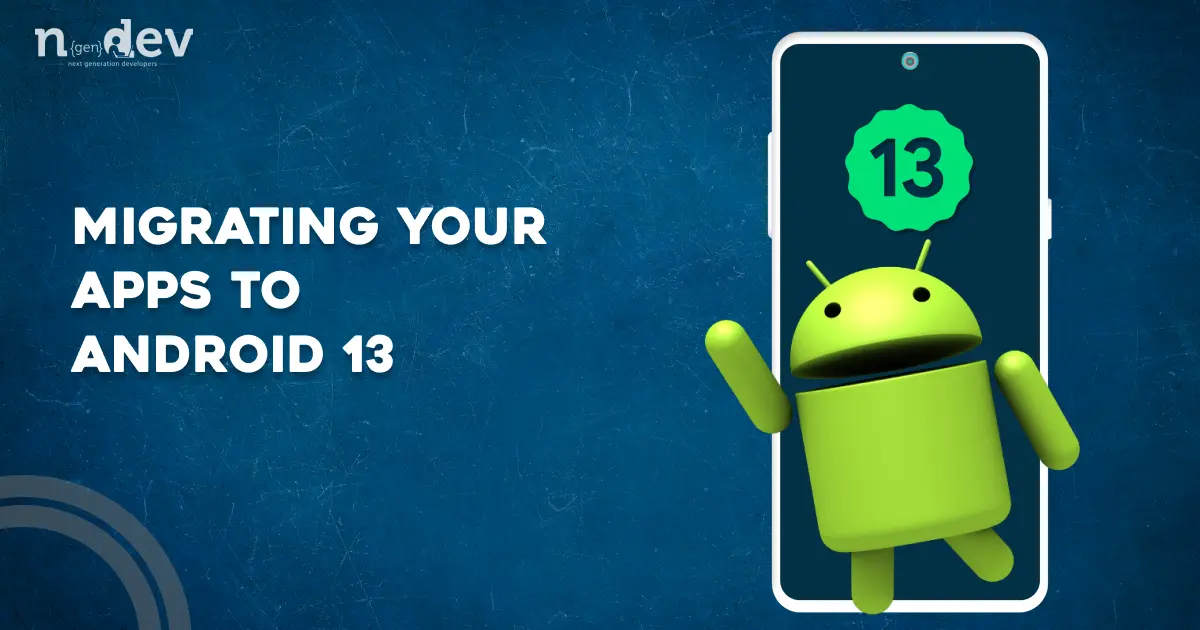
Android 13, Android release brings a blend of fresh features and behavioral shifts, aiming to enhance user experience in terms of functionality, security, and performance. While some changes seamlessly integrate with existing apps, others may require adjustments to align with the updated platform.
Discover our journey and potential stumbling blocks in the migration process. On this blog, we share how we harnessed Android 13’s novel capabilities.
Ensuring Smooth Compatibility with Android 13
As users eagerly embrace Android 13, they expect their favorite apps to work flawlessly. Ensuring your app’s compatibility isn’t just a choice – it’s a necessity. Changes within the Android platform can impact how your app functions. Early and comprehensive testing allows you to identify and address these issues before they adversely affect user experience.
Navigating compatibility doesn’t have to be a daunting task. One common concern developers face is whether they need to alter their app’s targetSdkVersion. In most cases, app adjustments can be made without necessarily changing this version. Similarly, there’s usually no requirement to integrate new APIs or modify the compileSdkVersion. However, specific circumstances and the functionality your app employs can influence these considerations.
Before diving into testing, familiarize yourself with the behavior changes affecting all apps. Even if you opt to maintain your app’s targetSdkVersion, these changes might still impact your app’s performance. By understanding these nuances, you’re better equipped to tackle any potential challenges that arise during the compatibility assessment.
To ensure a truly seamless transition, take advantage of synonyms for the keyword “Android 13.” Phrases like “latest Android iteration,” “new Android version,” or “Android’s latest release” can be seamlessly integrated into your content. Employing synonyms not only diversifies your vocabulary but also enhances the readability of your piece.
In the pursuit of clarity, remember that simpler language often yields better understanding. Overcomplicated terminology can deter even the most tech-savvy individuals. Therefore, strive for a balance between technical precision and user-friendliness. By crafting sentences that an average 11-year-old can comprehend, you ensure your content resonates with a wider audience.
While active voice often makes writing more engaging, a strategic use of passive voice can enhance readability. Aim to incorporate passive voice in around 10% of your sentences. This approach adds a pleasant variety, maintaining reader interest throughout your article.
Our meticulous planning led us to harness Android 13’s novel capabilities, and through this blog, we share our expedition, illuminating both the voyage and potential stumbling blocks in the migration process. Embrace the future with Android 13 – where evolution meets excellence.
Navigating the Android 13 Transition: A Comprehensive Guide
1.Upgrading to Android 13: A Step-by-Step Approach
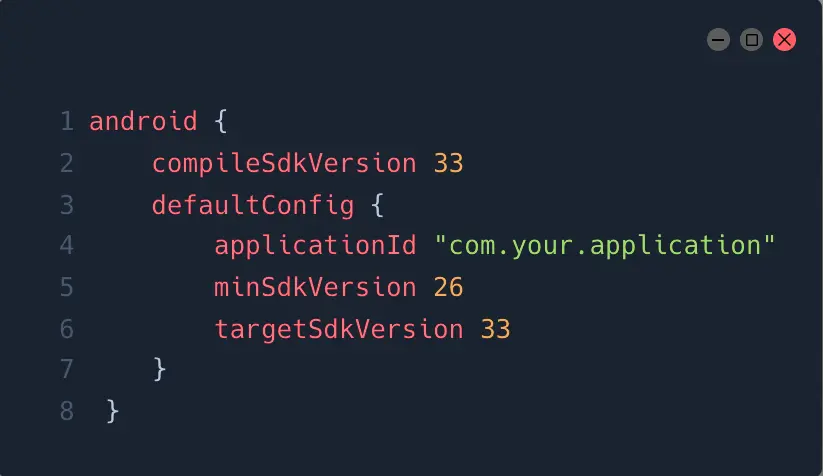
2.Handling Media Permissions: A Precise Approach
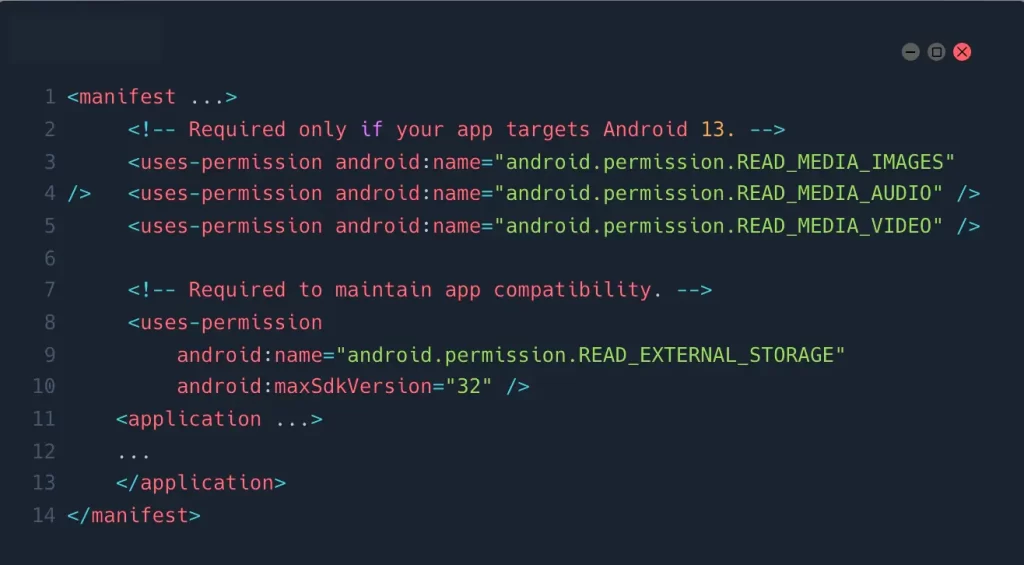
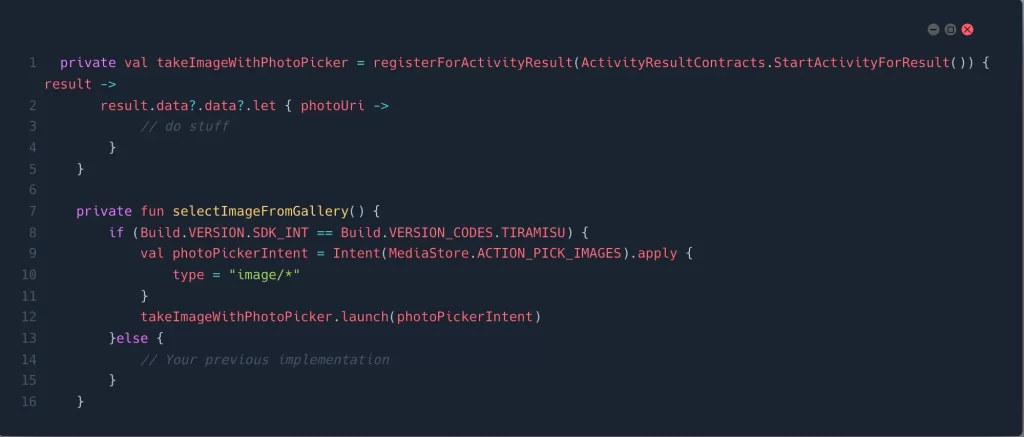
3. Navigating Notifications Permissions

Requesting permission can be achieved using the Activity Result API.
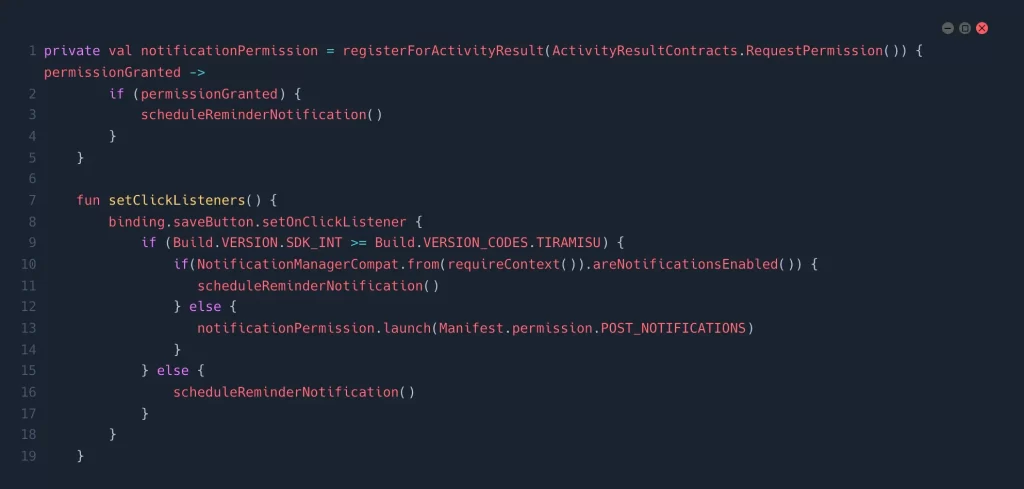
Android 13 handles notifications differently based on the target API level and the app’s installation status.
For newly installed apps, notifications are off by default. Depending on the target API level, your app’s control over the permission dialog may vary.
4. Adapting to the Advertising Landscape

Even if you’re not directly using the advertising ID, your app’s integrated advertisement SDK might rely on it. However, a framework update might eliminate the need for explicit declaration.
5.Embracing Behavior Changes
6. Grasping API Adjustments
APIs like Animator.class and Drawable.class now feature annotations such as @Nullable and @NonNull.
Overriding these APIs might necessitate code adaptation to match the new nullability properties.
The getSerializableExtra function now requires adding the underlying class directly as an argument for reading Serializable objects, eliminating the need for casting.

Conclusion
Android 13’s evolution brings both opportunities and challenges for app developers.
By following these guidelines, you can ensure a seamless transition and make the most of the new features while maintaining compatibility and user experience.
Stay ahead in the app development game by embracing these changes and enhancing your Android 13-powered apps.
Get Free consultation and let us know about your custom web and Mobile App project idea
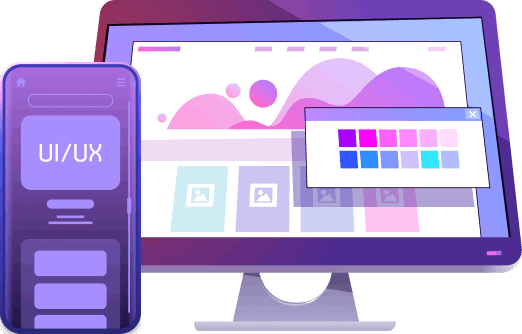
Over 13+ years of work experience, we have built 210+ web and mobile apps
We can help you with
- Dedicated Developer
- delivering high-quality development
- Custom Mobile App Development
- Innovative Solution For Startups and Enterprise

Technology reshaped e-commerce consumers experience in India: Havas Media’s whitepaper
A recent report, ‘Shaping Consumer Experiences,’ a collaborative effort by Havas Media, YouGov, and NFX across ten key markets, delves deep into the heart of India’s e-commerce
Read More
How Does Google Pay Make Money: GPay Revenue Model
In today’s digital age, mobile payment platforms have revolutionized the way we handle our finances. Google Pay, a prominent player in this arena, offers a seamless and convenient way
Read More
UPI Payments: Shaping the Future of the FinTech Industry
The world of finance is undergoing a seismic shift, and at the heart of this transformation lies the ubiquitous Unified Payments Interface (UPI). As the financial technology (FinTech) industry
Read MoreLatest Blogs
Explore the Latest Blogs on Trends and Technology.

